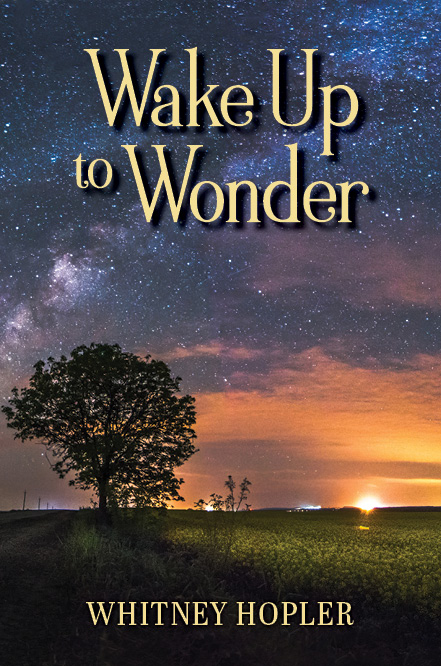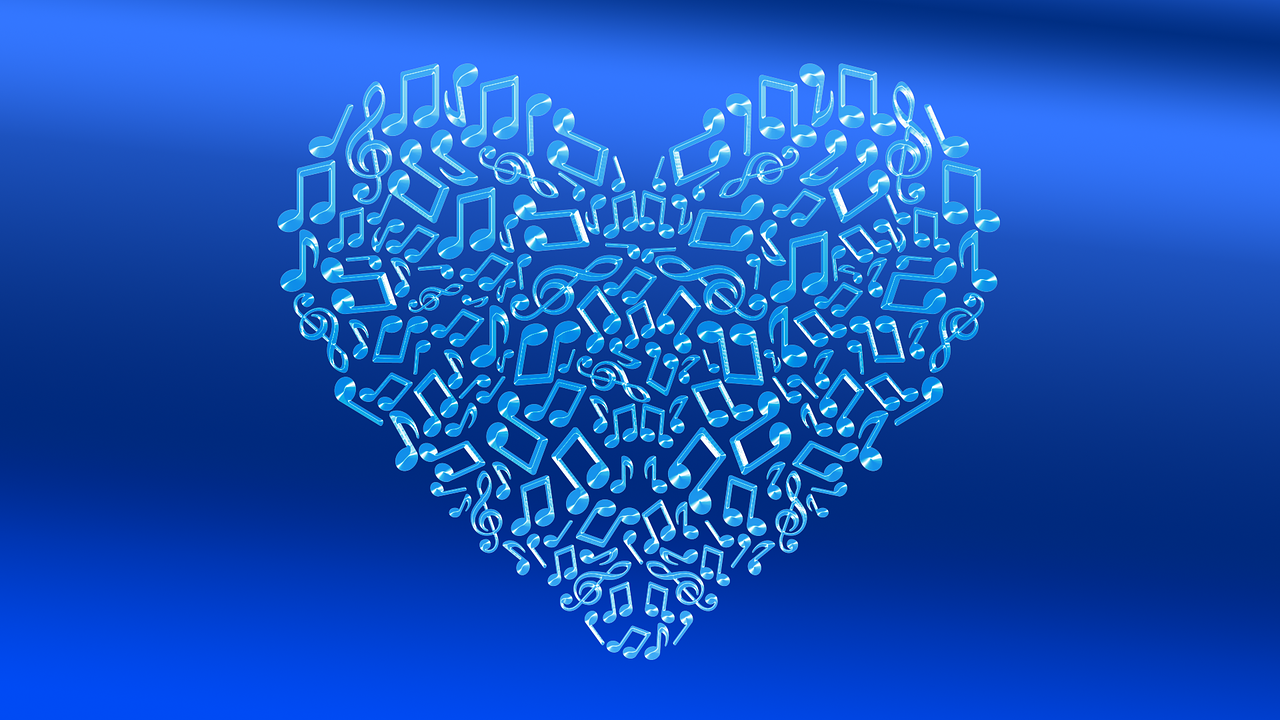It’s commonly known that music strengthens our emotional well-being when we enjoy listening to it. But music is much more than simply fun entertainment. Music is energy in the form of sound that can profoundly heal us humans at our core. Students studying music and well-being at George Mason University are learning about the amazing healing power of music through the undergraduate music and well-being minor and the graduate certificate in music and well-being.
“Everything is in a state of vibration, and music is all about vibrations,” said Dr. Glenn Smith, director of theory and composition at the School of Music, who created and continues to direct Mason’s music and well-being programs. “When you make music, you create an energy field, and that energy field is a carrier wave for intent. The energy of intent is powerful. Thoughts become things. Artistic creativity is the manipulation of possibilities.”
As students learn how to use the energy of music well, they can build greater well-being in the process, said Dr. Linda Monson, director of the School of Music. “The process of making music helps to create calm and focus while promoting creativity, which can strengthen well-being. The coursework in our pioneering program explores the connections between music and well-being, such as those between music and consciousness, music and mindfulness, and music and healing. If you’re interested in using music to help yourself and others, this is a wonderful way to learn how to do so.”
Mason’s music and well-being programs offer a variety of significant well-being benefits to students, said Dr. Nance Lucas, executive director of the Center for the Advancement of Well-Being. The undergraduate minor, which is open to all undergraduates regardless of their major or any previous musical training, is a valuable opportunity that is open to everyone, she said. “The music and well-being minor provides a powerful way for non-music student majors to activate their creativity without the pressure of performance. … We also know from neuroscience that music has an effect on our brains. When you listen to your favorite music or to music you like, it positively impacts brain connectivity and your emotional and mental states. Our School of Music through offering this minor is making significant contributions to our students’ well-being – I would encourage every student to consider enrolling in it.”
The Science Behind Good Vibrations
Music is a foundational part of the natural world, where everyone and everything makes their own form of music in a sense because of their sound vibrations. Learning the science behind vibrational energy can open minds up to understanding well-being in new ways, said Smith. He explains the science from a perspective related to quantum physics and neuroscience, which supports how musical vibrations impact energy.
“Playing music changes the vibrational frequency of the people listening to it and has physical effects on their bodies,” said Michelle Rupert, who is pursuing the music and well-being graduate certificate in Smith’s classes while working as an elementary school band director for Fairfax County Public Schools. “Our intent when playing music also affects the experience for the listener. For this reason, we need to be mindful when playing music for others and send love and positive thoughts to our audience before playing for them.”
Smith, who gives his students an opportunity to meditate together in each of his classes, explained that by setting a positive intention together, they create a collective vibration of energy that helps that positive intention to happen. “Playing music with intent charges and polarizes the human energy field. Music unblocks, balances and polarizes the human biofield’s etheric energy – magnetic attraction. The structure of that polarity is determined by the intent of the performance. I tell my students that music is very powerful. You have to be careful how you use it.”
Mason’s innovative Healing Arts Ensemble, founded by Smith in 2007, is made up of students pursuing the undergraduate minor and graduate certificate in music and well-being, as well as any music majors who choose to participate. The ensemble focuses on creating healing vibrations by students playing a diverse variety of instruments – such as drums, bells, piano, woodwinds, strings, their own voices and even crystal bowls and tuning forks. “Their performances are about communicating something deep and memorable,” Monson said. “The Healing Arts Ensemble gives students opportunities to really center into the music and the message that the composers, and they themselves as musicians, want to communicate to help the audiences who are listening.”
The way that ensemble students direct energy through music can lead to healing, explained Smith. “There actually are no wrong notes, but the students play with energetic vibrations in sync with each other with positive intentions. Healing is bringing all the energies of the body and mind into balance. When energy is unbalanced in the human body and mind, that can lead to disease. Music played with healing intent can clear blocked energy, which helps all of the systems work well together. The intent behind the sound and the vibrations are what unblock energy.” He said that students can lower their brain waves from the beta frequencies associated with stress and anxiety to the alpha and theta low frequencies associated with relaxation and learning. “The brain has a natural tendency to entrain to rhythm and the brain waves follow along.”
Stories of Healing
Rosane Castro, a senior who is majoring in music and minoring in music and well-being, discovered music’s power to heal after she was diagnosed with Multiple Sclerosis (MS) in 2009. As the disease caused her immune system to attack her brain, Castro had to leave her job as a court reporter because she was left with cognitive impairment. “I started private piano lessons in order to rehabilitate impaired brain function,” she recalled. Then she decided to pursue a music degree. “Each year brain function is getting better,” she shared. “MS is a progressive, debilitating illness. The last MRI shows the MS is dormant. I have had no major exacerbation since joining the School of music at Mason. I love music. I was fascinated by my own healing. I would like to combine music and healing to make the world a better place.”
Musical vibrations can affect people deeply, Castro said. “I am learning and understanding how music is repairing my body in a very gentle, unintrusive but powerful way. … “When people think about music, they think there’s only a music-to-ear connection, or music-to-body connection or even music-to-heart connection. But the relationship between people and vibration goes further than that. Each organ of our bodies has vibrations as well. Once one learns to synchronize and internalize music’s vibration, the body experiences ease rather than dis-ease.”
Castro sends healing intentions to audience members when she plays music in the Healing Arts Ensemble. “I don’t know what shape my audience is in, but when I play I try to convey peace and healing. If it works for me, it works for them too.”
Rupert was also searching for healing when she decided to enroll in the graduate program. After a botched foot surgery left her with severely damaged nerves, she sought ways to manage her pain beyond medications and discovered that sound vibrations played with healing intent brought significant pain relief. Listening to music with meditation and chanting have all helped strengthen her well-being, she said. “I immediately noticed positive changes to my physical and mental states as I began my studies in music and well-being.”
Rupert also discovered that when she shared musical healing principles with her elementary school band students, they also experienced greater well-being. “So, I took strategies that I learned with Dr. Smith and applied them to my daily classroom routines.” In Rupert’s classroom, anxious and stressed students calmed down and distracted students focused on learning after they played music with positive intentions. Sometimes physical healing would happen, as well – such as when a girl with an injured ankle reduced her pain through a trumpet’s sound vibrations, or when Rupert played a drum to help a boy with cerebral palsy calm his shaking hands. “I have been able to use tuning forks and crystal bowls to help calm students who are anxious for various reasons,” Rupert said, adding that are many other ways she has used music and well-being principles in her classroom. “I have talked to my students about the importance of being positive and the effect that a positive attitude has not only on their minds and bodies, but also how they can affect the people around them. It is possible to actually break up the negative energy that sometimes surrounds us when we become frustrated or anxious. When this happens, students take a positive energy shaker (egg shaker) and swirl it around their heads. … The energy shakers help to calm the students and allow them to be mindful of the way that they handle their feelings. … If the class as a whole becomes frustrated (when learning a new note or when starting a new piece of music) I will use the wind chimes to refocus their attention and correct their energy. … I have also had much success using the process of breaking up negative energy with kids who are emotionally troubled.”
Rupert’s music and well-being graduate studies at Mason have shown her the power of positivity at work, she said. “The highlight of what I have learned thus far in my studies is the power that a positive attitude has on mood and pain level. Focusing on the positive has greatly helped me and my students. … I am excited to continue to learn more about the healing power of music.”
Positive Energy for Well-Being
Any style of music can carry positive energy through people’s minds and bodies, Smith said, so students can feel free to play pieces in whatever musical style they enjoy the most. “Listening to music in a mindful way isn’t about whether you like the style of it or not, but whether or not the energy is having a positive effect on you. You can feel if the music is working with your mind and body’s natural energy. Our bodies are walking crystals. The water in our cells records and transmits information through energy that is powerfully affected by music.”
Lucas recalled how various types of music have fueled her well-being throughout her life. “I come from a family of musicians so since my early childhood days, music has been a significant driver of my well-being. I can remember being in flow when I played my flute in the concert band as a kid. My favorite things to do for my well-being are getting lost in listening to my music at home and going to concerts. When I’m stuck in traffic, I go to the playlist in my car versus getting stressed or upset about something I can’t do anything about. Music always lifts my spirit and gives me renewed energy focus whenever I need it.”
Music can help students overcome the stresses and anxieties of college life, said Smith. By creating musical energy with positive intentions and healing vibrations, he said, “You can heal fear with love. I teach students how to overcome their fears through music. The key to releasing the fear is to send love.”
The principles of energy vibrations that students learn in music classes can help them boldly pursue their purpose in life, which is vital to their well-being. “Students should follow their hearts,” Smith said. “If you’re a vibrational match for what you want to do, everything will take care of itself.”
Mason’s music and well-being programs have benefited from the financial support of donors, such as Don and Nancy deLaski, who gave generously to both well-being and arts initiatives at Mason. “The work that Dr. Smith has done in fashioning this opportunity for students beautifully combines two of the deLaskis’ loves: their devotion to the arts (as exemplified in the deLaski Performing Arts Building) and their deep interest for consciousness studies, creativity, mindfulness, and well-being,” noted School of Integrative Studies professor Dr. Mark Thurston.
A Universal Language for Community in Diversity
Music has often been called the universal language because of how it allows all human beings to express and understand messages. Since Mason is a highly diverse university, music is a powerful way of connecting with each other here, said Lucas. “Music is a powerful social unifier and can span generations, cultures, and religions, to name a few. Music can uplift and connect the rich diversity among our students at Mason.”
Castro said that studying music from different cultures has helped her understand people from those cultural backgrounds more. “Music diversity exposure on campus, in the curriculum, can be a way of helping people to connect,” she said.
Monson described music’s power to connect people: “Music is the perfect example of global connectedness. We can connect through sound and sharing the experience of making and listening to music together. Our students literally come from all over the world to study at Mason together. It does not matter which culture one grew up in. We can connect in profound ways through music. It’s about finding that deep level of communication. We can have meaningful communication happen through wordless sound. Music really is community because we bring people together through sound. There’s a shared experience that moves us together by creating transformative beauty and peace. We are practicing an art form that connects to each of us as full human beings.”



